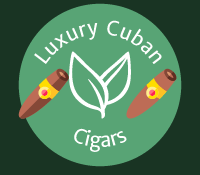Nowadays, there exist alot of counterfeit and fake Cuban cigars out there and being able to differentiate the fake from the real is a trick few people know. These are a few tricks on how to recognize authentic cuban cigars;
1) There are no cheap Cohibas
There exist only two types of cohibas which are an expensive and a very expensive cohiba. Even in cuba where prices are expected to be lowest in the world, a Cohiba Espledido retails for upwards of $25 and a Behike 56 if you can find retails for northwards of $30. In Canada and other regions out of Cuba, a Behike retails from the north of $100. If you find a cohiba at bargain prices then its definitely not an authentic one.
2) Know your Limited Editions
The prices of limited editions are generally controlled by collectors and so counterfeiters make it their biggest business putting fake secondary bands on Cohibas and Montecristos but they don’t usually get the dates right. Counterfeiters will put a limited edition band on a cohiba every year even though cohiba makes limited editions rarely. Knowing these dates skyrockets your chances of identifying an authentic cuba cigar from fakes.
3) Check the Cigars symmetry
A proper box of real Cubans will have a certain amount of symmetry. The cigars will be the same size (or very, very close), the colors will be similar cigar to cigar and the bands will be aligned from one cigar to the next. Fakes are often made with substandard quality control.
4) Check the location of the labels.
A lot of cuban cigars seen lately have the appropriate labels but what gives them out is the location of the label. Authentic cuban cigar labels are on the box and not inside. Habanos takes stickers, labels and seals very seriously—this isn’t a do-it-yourself process. Stay away from this very lazy counterfeit.
5) Pass on Glass and clear plastic cover
Does the box of cigars you’re buying have a glass, Lucite or otherwise clear lid? It’s fake. Cuban cigars aren’t packaged in boxes with clear lids. Habanos S.A. does not produce anything with a clear lid. We’ve seen fakes like this in the Caribbean, Mexico and elsewhere, sold under such creative names as Cohiba Crystal and others. Glass-top boxes are always going to be counterfeit.
6) Beware the fake Behike
Cohiba Behikes are a prime target for counterfeiters, given their sky-high prices and exclusivity. The first thing to look for is a box of 10—Behikes aren’t packed in boxes of 25. Ever. Another thing to look out for is the placement of the labels. Counterfeiters tend to put the seals directly onto the black lacquer, glossy surface of the Behike box; Habanos will never do that. Official labels and seals appear on the box’s outer, black cardboard protective shell. And the true band has two elaborate holograms. A proper band isn’t a certain sign of a real cigar, but mistakes in the band guarantee you have a fake.
7) Beware the Barber Pole
Barber pole cigars—cigars made with two wrappers of different color, intertwined in a fashion similar to a barber pole—are intriguing to the eye, but they’re not part of Cuba’s cigar portfolio. We’ve seen several fake Cohibas made in this method. Pass. They are sure fakes.
Following the above tricks will easily help you on how to recognize an authentic cuban cigar. If you find this article interesting, then you should read our article on best cuban cigars to smoke
